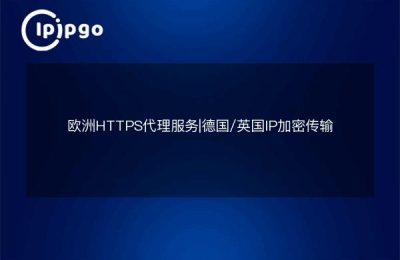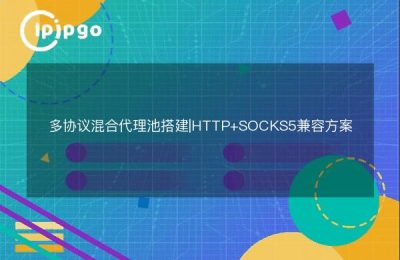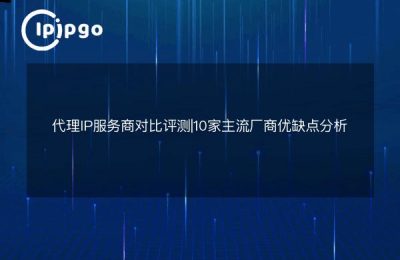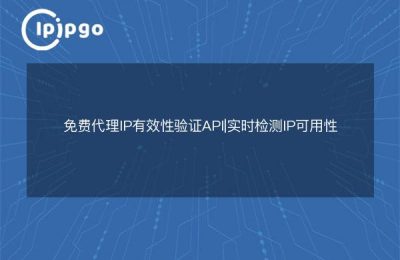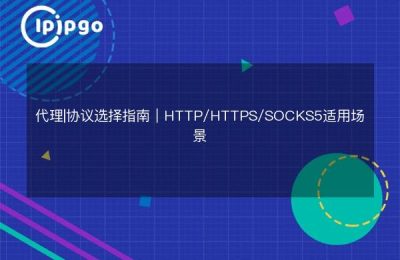
Core Pain Points and Solution Ideas of Intelligent Scheduling System for Crawling Agents
When developers are dealing with large-scale data collection, traditional proxy IP solutions often encounterIP blocked, resources wasted, response delayedThree major problems. An e-commerce platform had a price monitoring failure during the campaign due to IP blocking, directly losing millions of orders - this real case shows that simply stacking the number of proxy IPs does not solve the problem.
The key to an intelligent dispatch system isDynamic matching of business scenarios: Adjust the IP calling strategy in real time according to the protection level, request frequency, response speed and other parameters of the target website. For example, social platform collection requires high-frequency switching of residential IP, while enterprise information query is more suitable for long-term stable static IP.
Tips for real-world application of AI predictive modeling
We have found through the ipipgo service case that mature predictive models need to fuse three dimensions of data:
| data type | Acquisition method | application scenario |
|---|---|---|
| Historical request log | Log analysis system | Identify cyclical flow fluctuations |
| Web site response characteristics | Real-time monitoring module | Predicting the trigger conditions of the anti-climbing mechanism |
| IP quality indicators | Service Provider API Interface | Evaluate the pool of available IP resources |
Courtesy of ipipgo'sIP Health Scoring SystemFor example, it automatically generates availability prediction reports by monitoring 12 indicators such as IP response speed, success rate, and historical blocking records in real time. Developers can build traffic scheduling rules based on these data to realize accurate resource preloading.
Operations and maintenance management solution for dynamic resource pooling
Effective maintenance of the IP resource pool is guided byThree-Three Principle (principle of a three-way system)::
- Keeping 30%'s IP active
- 30% as a spare buffer
- Remaining 40% regular rotation testing
ipipgo's.Intelligent Rotation SystemIt supports automatic adjustment of ratios according to business needs. Its unique regional heat analysis function can automatically optimize low load nodes according to the geographic location of the target server, which can reduce the request failure rate of 23%.
A practical guide to avoiding the pit
A financial data service provider had wasted IPs due to misconfiguration: they uniformly configured dynamic residential IPs for all crawler tasks, and the actual business 60% API interface could be completed with only static data center IPs. This case reminds us:
- find differing aspectsType of data acquisitionConfiguring IP Policies
- build upIP type whitelisting mechanism
- set upAbnormal Flow Fusing Rules
via ipipgo'sProtocol-level traffic analysis toolsThe developer can clearly see the actual consumption of different IP types and avoid cost wastage caused by resource mismatch.
Frequently Asked Questions
Q: How do I determine whether I should use a dynamic or static IP?
A: Dynamic IP is suitable for scenarios that need to simulate the behavior of real people (e.g., commodity price comparison), and static IP is more suitable for scenarios such as API docking and other scenarios that require a fixed exit. ipipgo supports a mixture of the two modes.
Q: What should I do if I encounter an unexpected traffic spike?
A: It is recommended to set up elastic expansion rules in advance in the ipipgo console to automatically activate the backup IP pool when the request queue is monitored to be piled up, and the resource expansion can be realized within 5 seconds with intelligent routing.
Q: How is the scheduling of IPs from different countries optimal?
A: ipipgo's geo-fencing function can automatically match the nearest nodes, while providing cross-country routing optimization solutions. It is measured that when Australian users access US services, the latency can be reduced by 47% through Singapore transit nodes.

